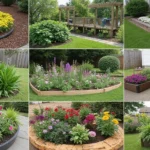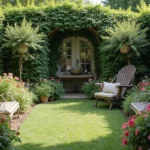Transform your outdoor space with stunning garden edging ideas that are not just beautiful but also eco-friendly! A well-defined garden border not only enhances the overall aesthetic of your landscape but also increases curb appeal. Whether you’re looking to create a rustic look with natural materials or prefer the sleek lines of modern designs, there’s something here for everyone. Let’s take a closer look at 30 unique and sustainable garden edging ideas that can elevate your garden to the next level, making it a personal paradise.
From recycled materials to easy DIY projects, each idea reflects a commitment to eco-friendly practices while adding style to your outdoor decor. Let’s dig in and inspire your next garden project!
1. Reclaimed Wood Edging
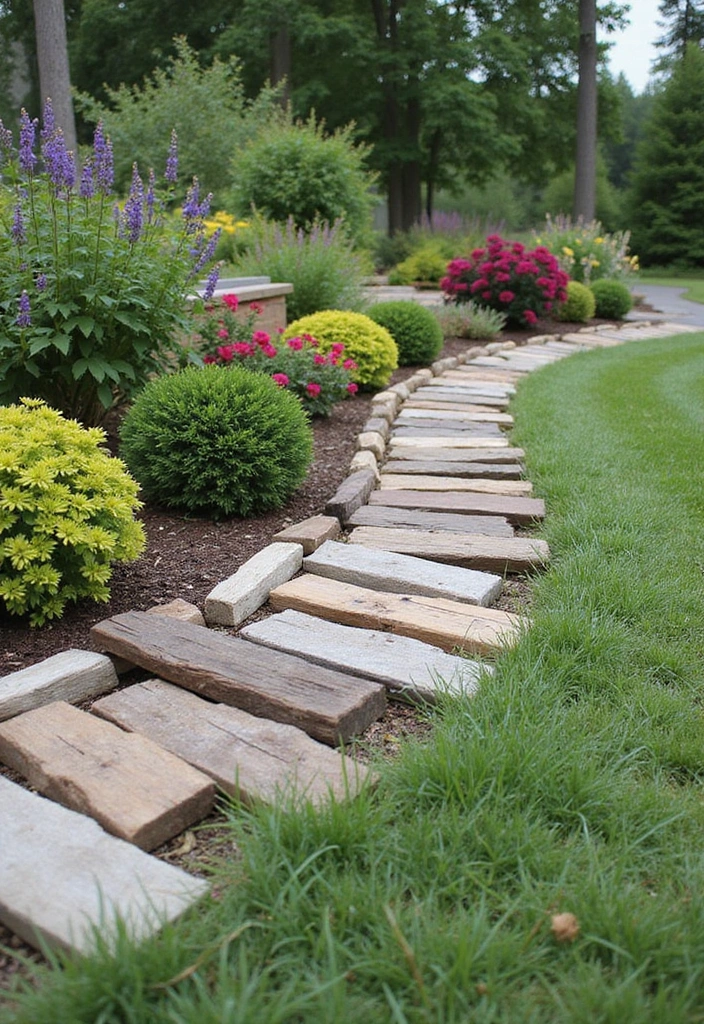
Reclaimed wood is a fantastic choice for garden edging that adds warmth and character to your space. Sourced from old fences, pallets, or barn wood, this material is not only sustainable but also brings a rustic feel to your landscape design. You can easily create a charming border by cutting the wood into planks and arranging them along paths or flower beds.
Consider leaving some of the bark on for an even more natural look! A few tips:
– Use treated wood for longevity, especially if it will come in contact with soil.
– Mix different shades of wood for added texture.
– Secure the pieces with garden stakes to keep them in place.
This method not only recycles materials but also adds a unique touch to your outdoor decor.
2. Stone Borders

Using stones for garden edging creates a stunning and durable boundary that can last for years. You can choose from different types of stones, like river rocks, slate, or granite, to suit your garden’s aesthetic. The natural variations in color and texture add a sophisticated touch to your landscape design.
To create your stone border:
– Lay down a landscape fabric to prevent weeds.
– Arrange stones in a single row or stack them for a more dramatic effect.
– Consider filling gaps with gravel for a polished finish.
This method doesn’t just look great; it also makes maintenance easier by defining garden areas.
3. Metal Edging
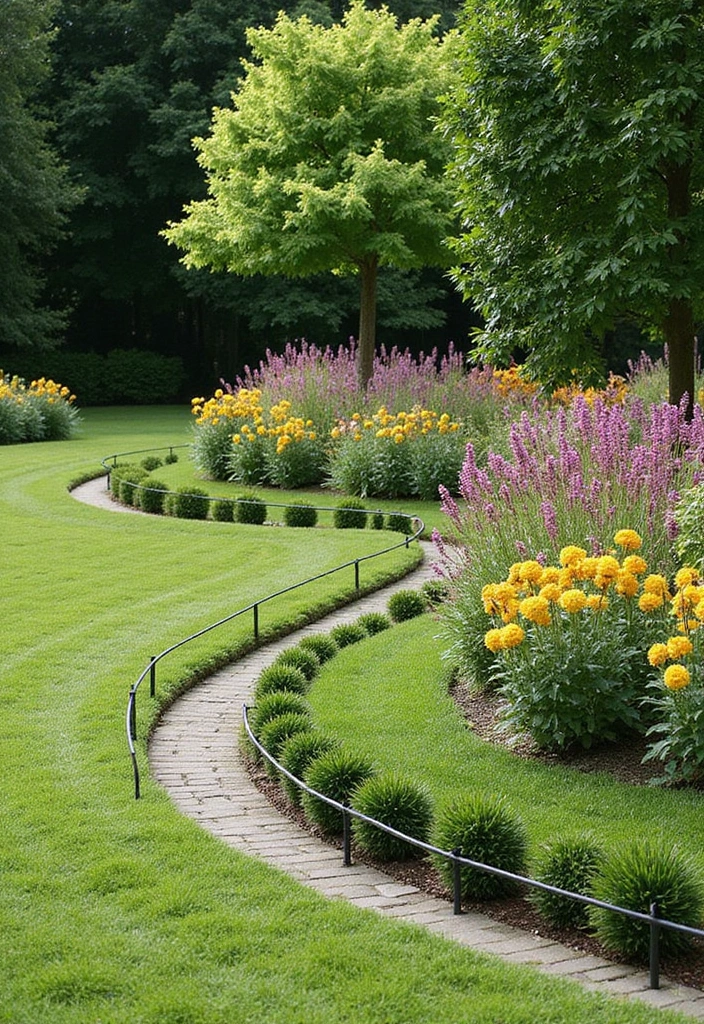
For a modern twist, metal edging is sleek and functional. Whether you choose aluminum or steel, this option provides a clean line that separates your garden from lawns or pathways. Metal edging is also incredibly durable and will withstand the elements without fading or rusting.
To install:
– Dig a trench where you want the edging to go.
– Place the metal strips and secure them with spikes.
– This works well with contemporary garden designs and pairs nicely with minimalist landscaping.
A bonus is that metal edging reflects light, adding an extra dimension to your garden decor.
4. Brick Borders
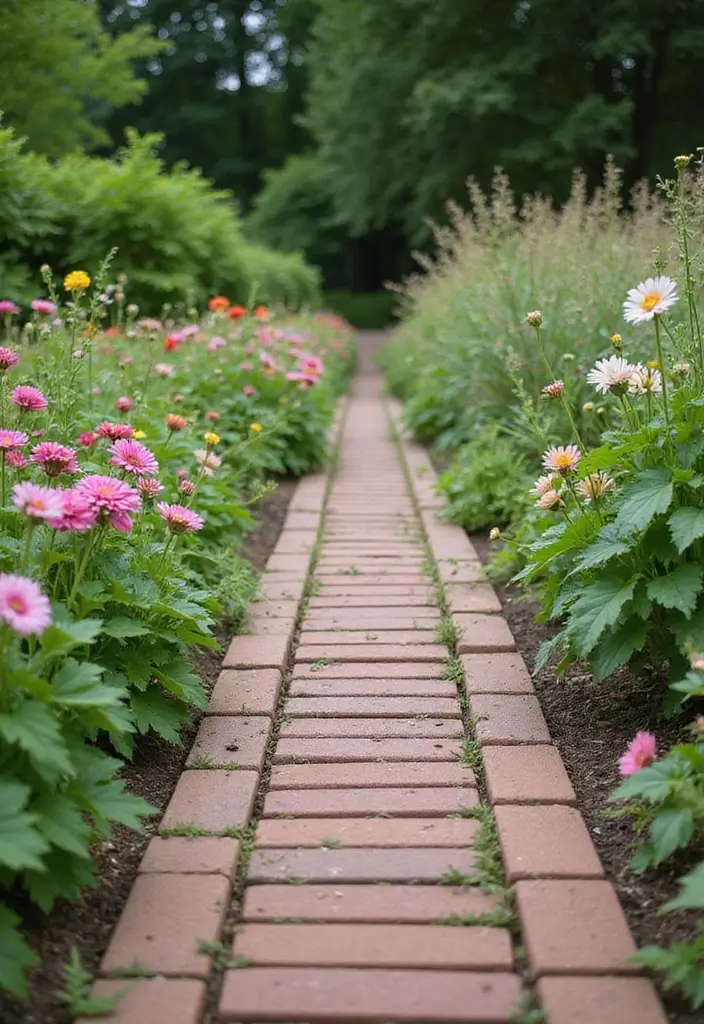
Bricks are a classic choice for garden edging that provides both style and structure. They come in various colors and can be laid in different patterns to enhance your landscape design. A brick border can create a formal look or a more relaxed feel, depending on how you choose to position them.
To create a stunning brick border:
– Lay a foundation of sand to provide stability.
– Arrange bricks in a straight line or a curved pattern for a more organic feel.
– Fill gaps with crushed stone or gravel.
The enduring beauty of bricks can elevate your outdoor decor and withstand the test of time.
5. Living Edging
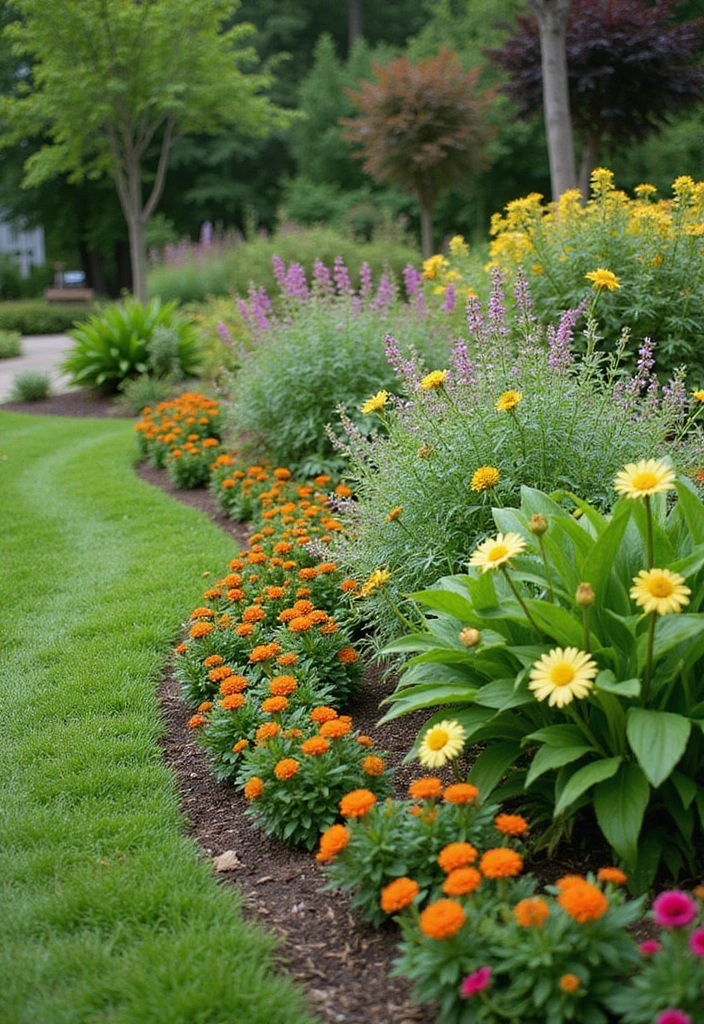
For a truly eco-friendly approach, consider living edging. This involves using low-growing plants or shrubs to create a natural border that blends seamlessly into your garden. Options like thyme, lavender, or low hedges not only define spaces but also provide additional benefits such as attracting pollinators.
To implement living edging:
– Choose plants that are hardy and suited to your climate.
– Space them adequately to allow for growth.
– Regular trimming will keep them in shape and looking fresh.
This idea not only looks vibrant but also supports local ecosystems.
6. Recycled Tire Edging

Recycling old tires is a creative and eco-friendly way to create unique garden borders. Cut the tires into sections or use whole tires for a whimsical touch. They can be painted in bright colors or left in their natural state to blend in.
Some points to consider:
– Ensure tires are cleaned and free from harmful chemicals.
– Position them to create a playful, soft edge around flower beds.
– They can also be used as plant holders for herbs and flowers.
Tire edging adds a fun flair while promoting recycling and sustainability in your outdoor decor.
7. Bamboo Edging
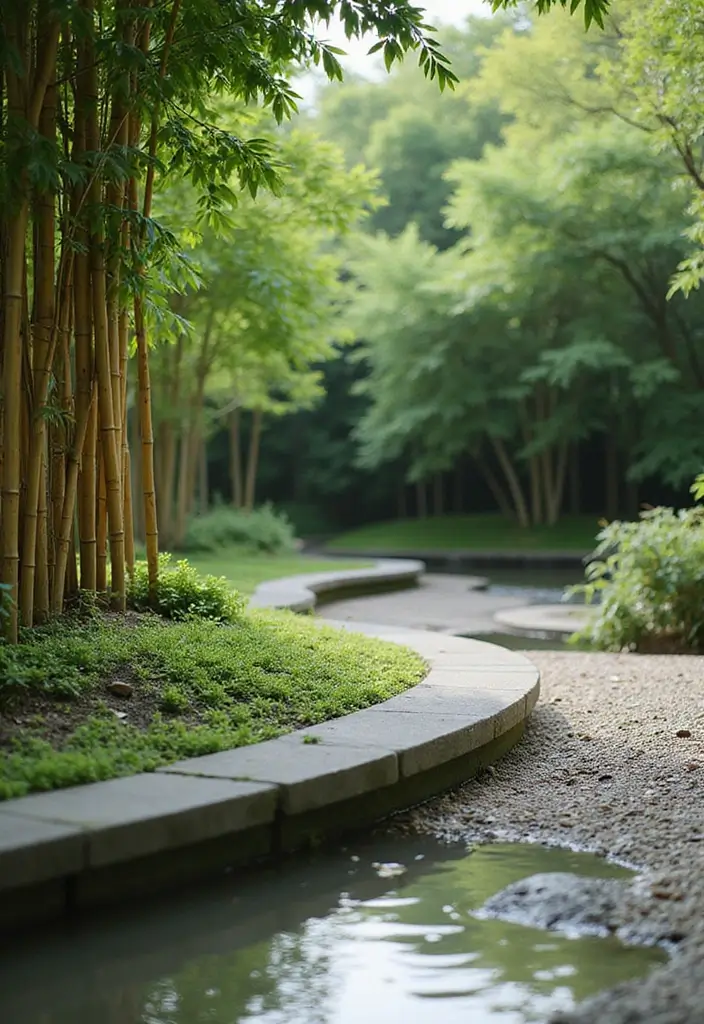
Bamboo is not only an attractive option but also one of the most sustainable materials available. Its lightweight yet sturdy nature makes it perfect for garden edging. The natural color and texture of bamboo bring a tropical touch to your garden, ideal for zen gardens or Asian-inspired landscapes.
For installation:
– Use bamboo poles and dig small holes for stability.
– Arrange them close together for a seamless look.
– Bamboo can also be treated for added durability and resistance to weather.
This style is not only beautiful but also eco-friendly, aligning with a natural gardening philosophy.
8. Glass Bottle Edging
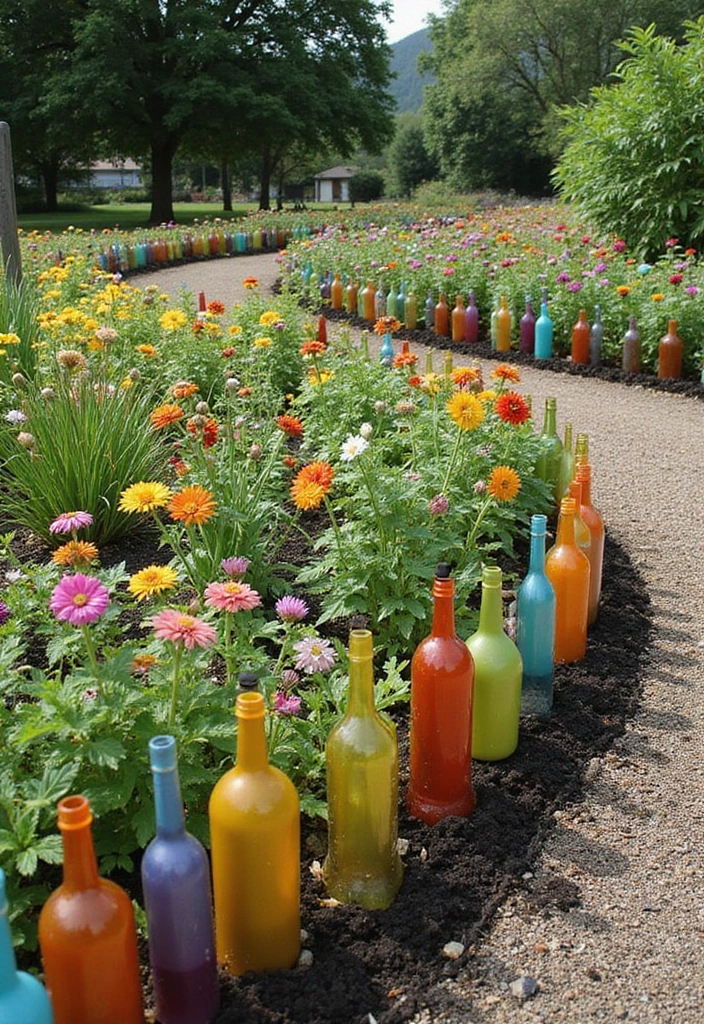
Transforming glass bottles into garden edging is both artistic and eco-friendly. You can use empty wine bottles, beer bottles, or any colorful glass to create a striking border. This unique method adds a fun, whimsical vibe to your garden design.
To get started:
– Bury the bottles upside down, leaving the necks protruding, or lay them horizontally for a ground-level border.
– Mix different bottle colors for a stained glass effect.
– Ensure the bottles are clean and free of any labels.
This idea not only recycles but also serves as a conversation starter among your guests.
9. Gravel Edging
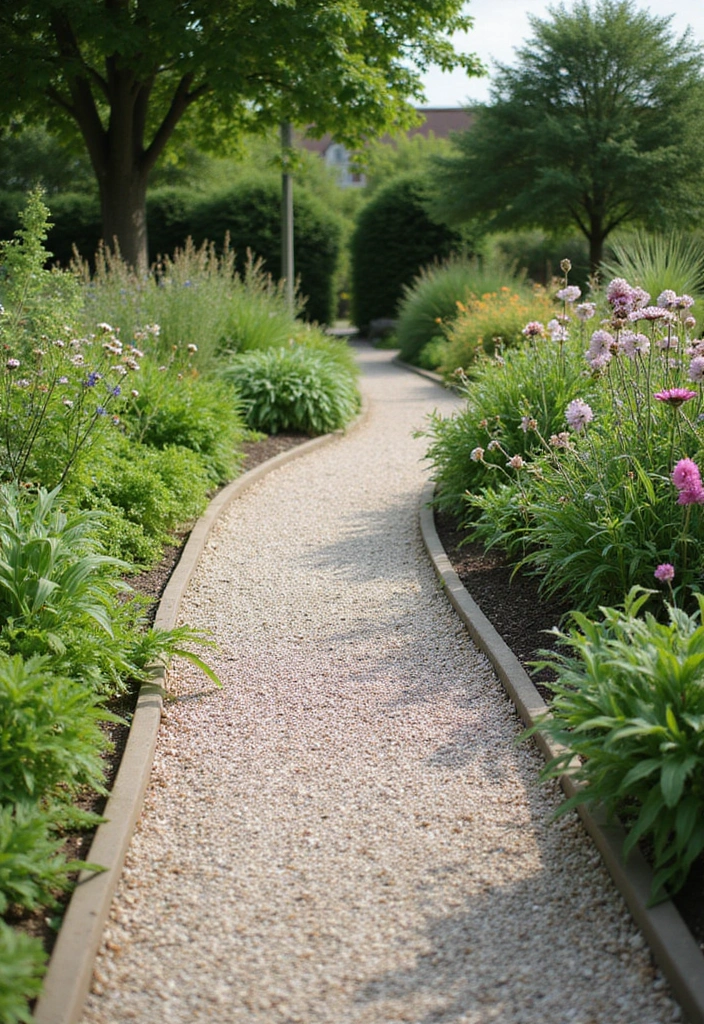
Gravel is a versatile and practical choice for garden edging. It’s perfect for defining paths and borders while allowing for good drainage, which is essential for healthy plants. The texture and color of gravel can complement a variety of garden styles, from rustic to modern.
To create gravel edging:
– Dig a shallow trench where you want the edge.
– Line the trench with landscape fabric to prevent weeds.
– Fill with gravel to create a clean, defined border.
The simplicity of gravel edging can also make garden maintenance easier, as it clearly separates different areas.
10. Concrete Edging

Concrete edging offers a robust and long-lasting border solution that can be shaped and colored to fit any landscape design. It provides a polished, modern look and can be molded into various designs, including curves and waves.
For DIY concrete edging:
– Build a frame to shape the concrete.
– Pour the mixed concrete into the frame and let it set.
– Once dried, you can paint or stain it for added flair.
This method ensures your garden remains defined and stylish for years without the need for replacement.
11. Coconut Fiber Edging
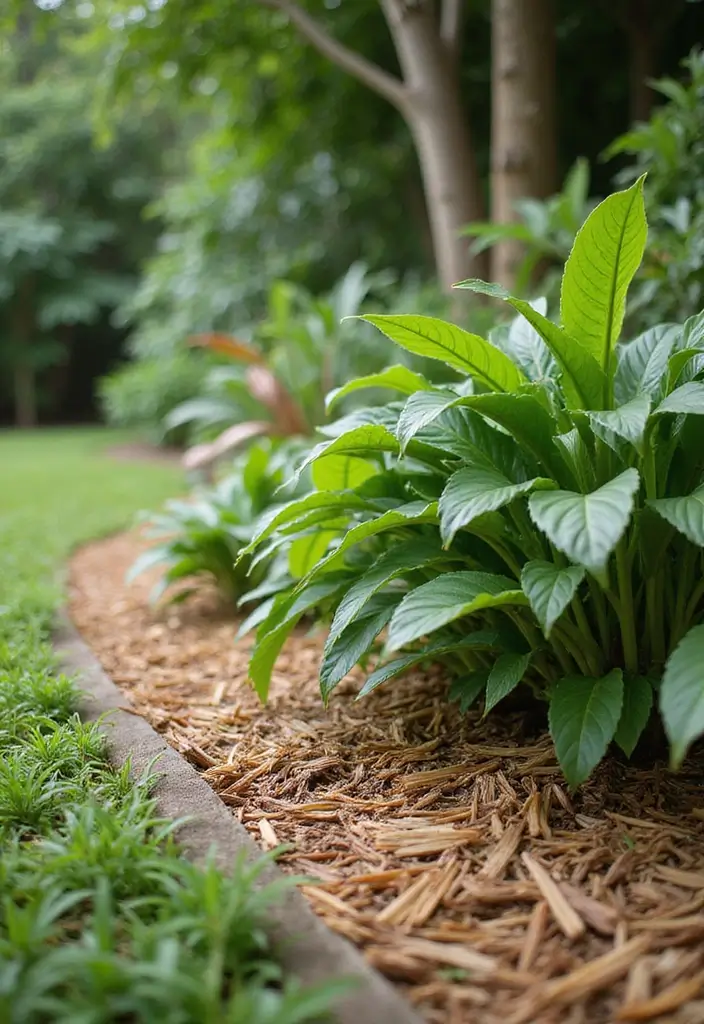
Coconut fiber is an innovative and eco-friendly material for garden edging. It’s biodegradable, making it a perfect choice for environmentally-conscious gardeners. The natural texture adds a soft look to your garden, while also working to prevent soil erosion.
To use coconut fiber:
– Cut the fiber into strips and position them along garden beds.
– Secure them in place with stakes or by burying the edges.
– It’s great for defining flower beds or as a barrier in vegetable gardens.
This option not only looks good but also contributes to a sustainable garden ecosystem.
12. Paver Stone Borders
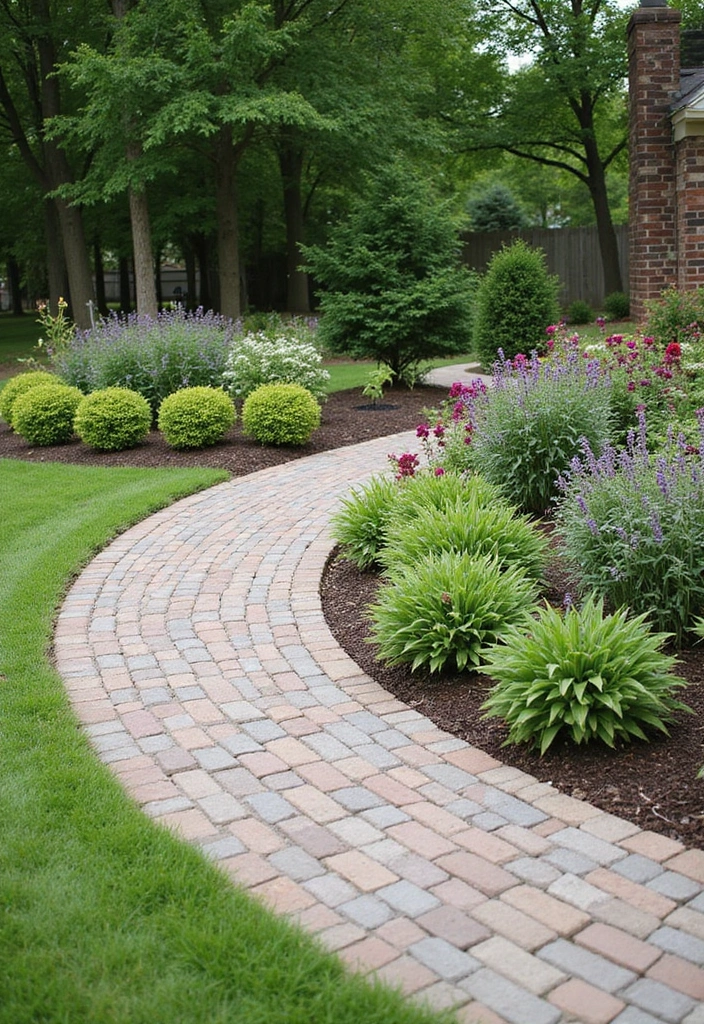
Paver stones are a stylish and practical choice for garden edging. They come in a variety of shapes, colors, and sizes, allowing for creativity in your landscape design. Not only do they create a neat border, but they also can be used to establish paths throughout your garden.
To install:
– Lay a bed of sand or gravel as a base.
– Arrange the paver stones in your desired pattern, ensuring they are level.
– Fill gaps with small gravel for a polished finish.
Paver stones can add a touch of elegance and sophistication to any outdoor space.
13. Slate Edging
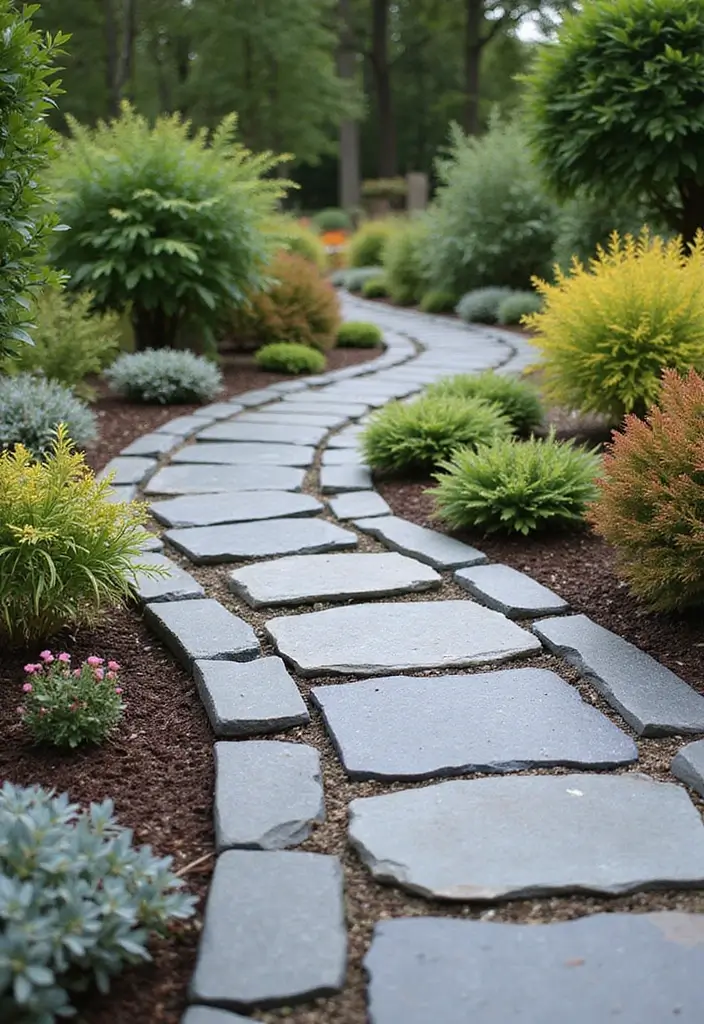
Slate is another stylish option for garden edging. Its natural hues and textures provide a sophisticated contrast against bright blooms and greenery. Slate can be used in various ways, from flat pieces to create a smooth edge to stacked pieces for a more rugged look.
To set up slate edging:
– Dig a trench where you want the edges to go.
– Lay down the slate pieces, either flat or upright.
– This method is highly durable and can withstand harsh weather conditions.
Not only does it add beauty, but it also aids in weed control.
14. Woven Willow Edging
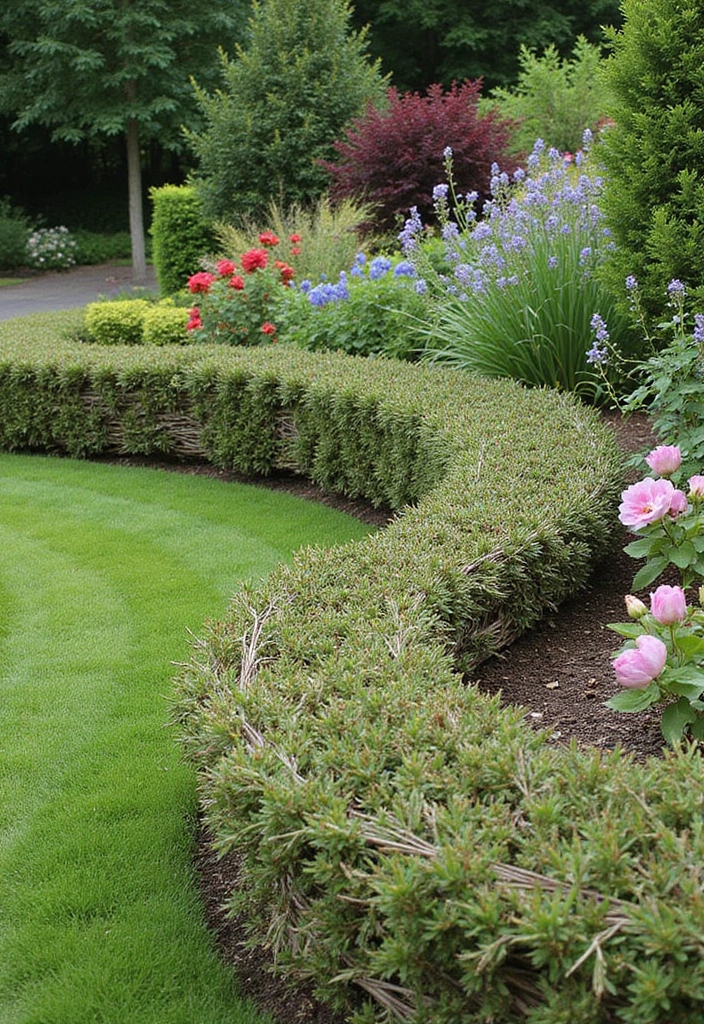
Woven willow is a charming and organic option for garden edging. This method uses flexible willow branches woven together to create a rustic fence-like border. It’s perfect for cottage gardens or any space where you want a more natural feel.
To create woven willow edging:
– Gather flexible willow branches and stake them into the ground.
– Weave the branches in and out to create a sturdy edge.
– This method is both decorative and functional, providing a habitat for beneficial insects.
This edging technique beautifully complements a variety of garden styles.
15. Upcycled Pallet Edging
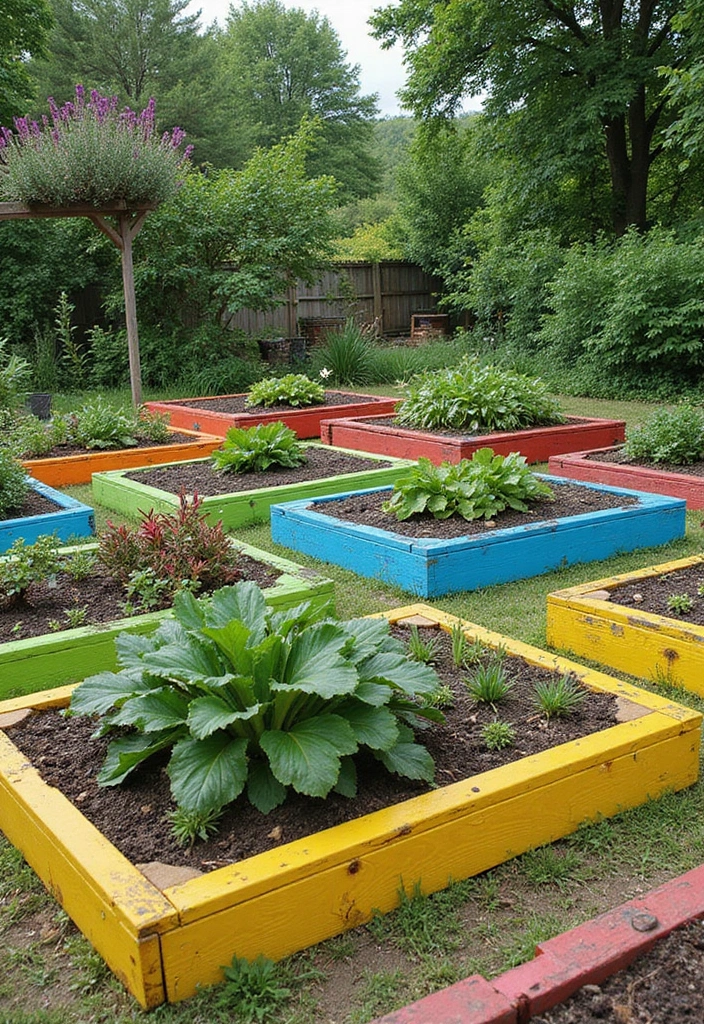
Upcycling pallets for garden edging is a trendy and budget-friendly choice. You can cut pallets into sections or use them whole, painting or staining them for a custom look. This idea not only reuses materials but also adds a personalized touch to your garden.
To use pallets:
– Cut them down to the desired size, or leave them intact for a more rustic feel.
– Create a border by staking them into the ground or securing them with landscape fabric.
– This method is perfect for vegetable gardens, giving them a tidy appearance.
It’s a creative way to promote sustainability and add character to your outdoor space.
16. Natural Rope Edging
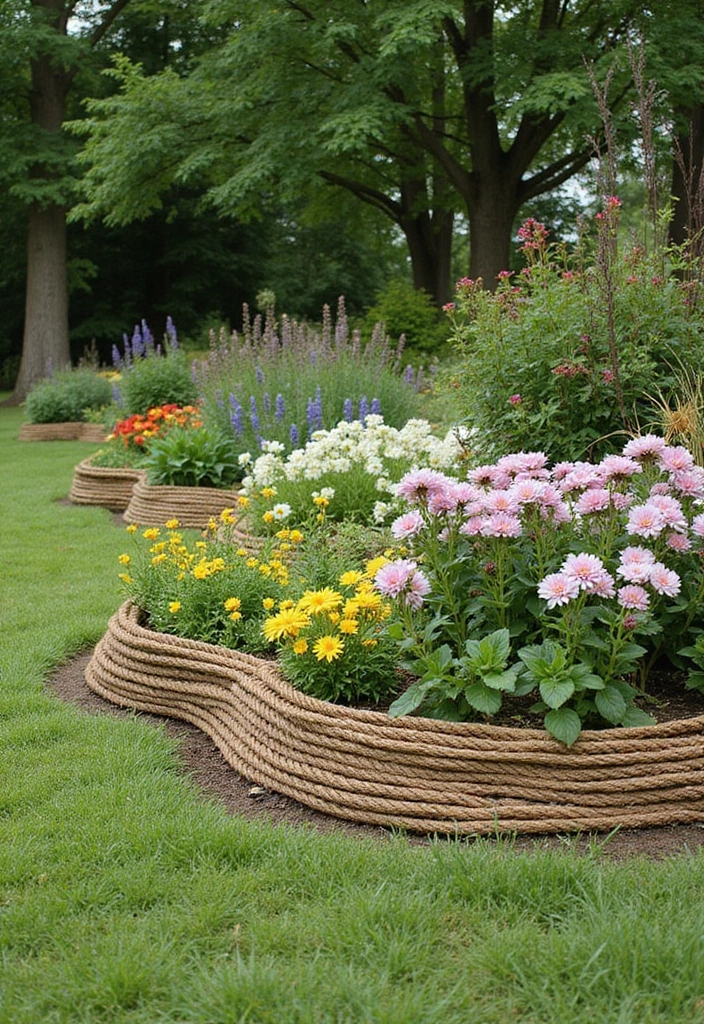
Natural rope edging is a unique and appealing choice that adds a nautical or rustic charm to your garden. Made from jute or hemp, this option is biodegradable and inexpensive. It works beautifully in coastal or country-themed gardens.
To create rope edging:
– Lay down a thick layer of mulch or soil as a base.
– Loop the rope to form a boundary around your garden beds.
– Secure it with stakes or by tying it around posts for a more defined look.
Rope edging is not only visually pleasing but also eco-friendly, making it a fantastic addition to your outdoor decor.
17. Terracotta Pot Edging

Terracotta pots can be repurposed as an eye-catching edging solution in your garden. You can use whole pots or cut them in half for a more subtle border. The warm orange tones of terracotta contrast beautifully with green plants and flowers.
To implement terracotta pot edging:
– Arrange pots along pathways, flower beds, or vegetable gardens.
– Mix in various sizes and shapes to create visual interest.
– This method not only looks great but adds a unique texture to your landscape design.
It’s a delightful way to recycle while enhancing your garden’s aesthetic.
Transform your garden’s edge with terracotta pots! Not only do they add warmth and texture, but repurposing them also makes for an eco-friendly and beautiful landscape that truly stands out.
18. Pinecone Edging
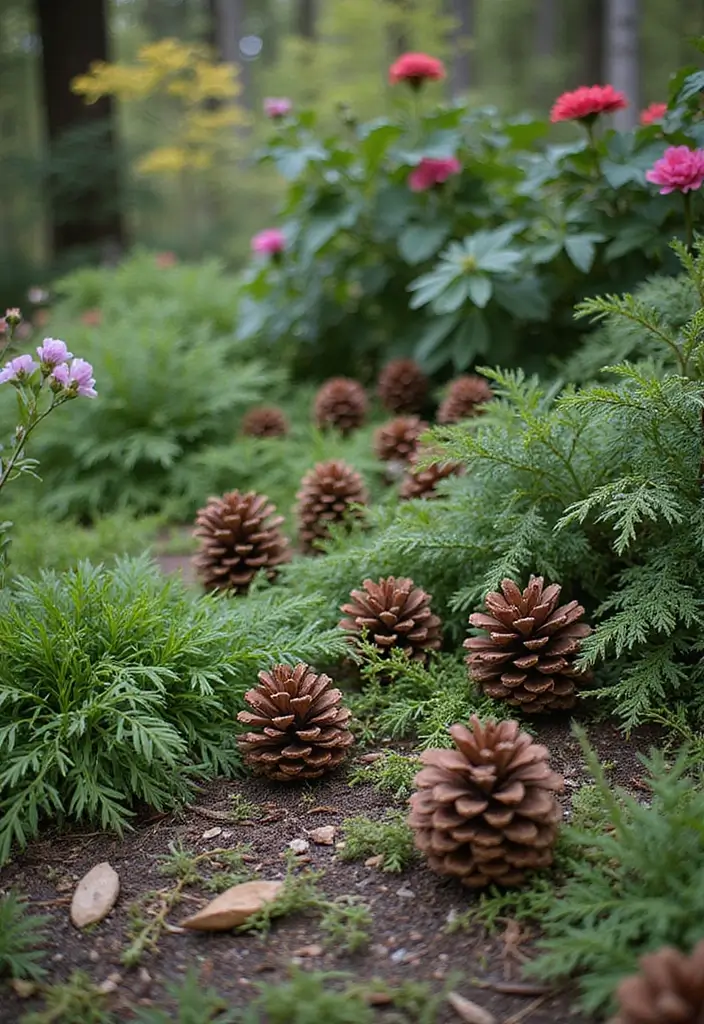
Using pinecones as edging is an innovative and whimsical idea that brings elements from nature directly to your garden. They can serve as a biodegradable border that adds texture and a rustic feel to your landscape.
For creating pinecone edging:
– Gather pinecones and arrange them along the desired boundary.
– You can secure them in place with soil or stones.
– This method works great in woodland or natural-style gardens.
Not only does it look charming, but it also promotes an eco-friendly approach by utilizing natural materials.
Let nature’s beauty edge your garden! Pinecone edging not only adds charm but is a sustainable choice that highlights the rustic elegance of your landscape.
19. Cork Edging
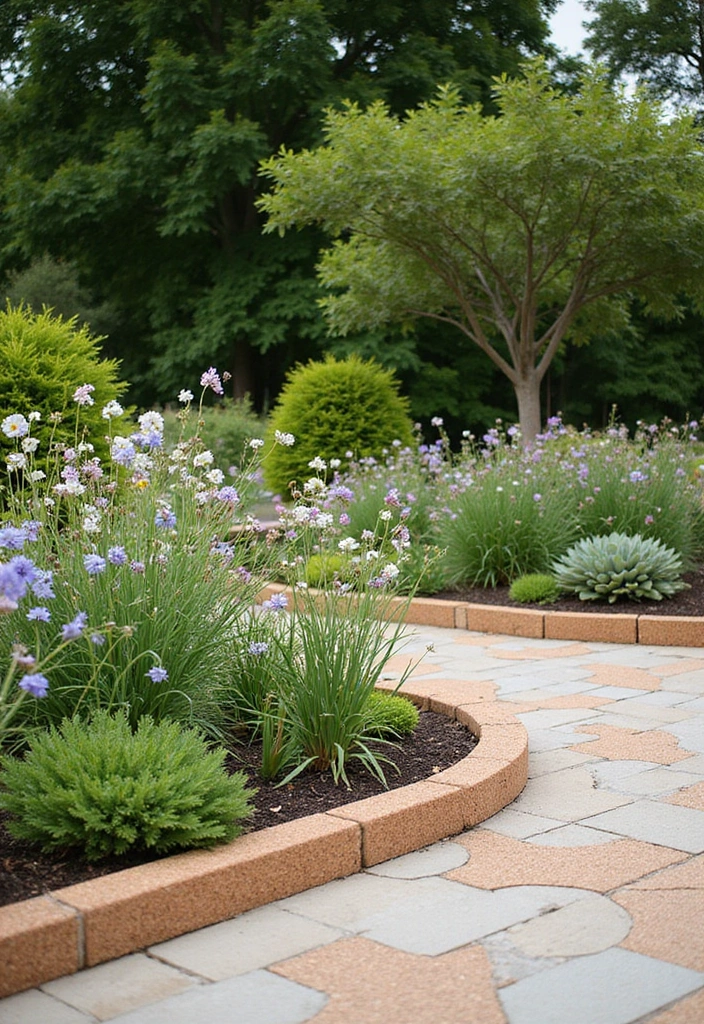
Cork is a sustainable and lightweight material that can be used to create a unique edging for your garden. It’s naturally resistant to moisture and pests, making it a practical choice for flower and vegetable beds. Plus, it has a modern look that can elevate your landscape design.
To set up cork edging:
– Use cork tiles or strips, and arrange them along the desired border.
– Secure them with stakes or by embedding them into the soil.
– This option is perfect for creating a clean, polished look.
Cork edging combines eco-friendliness with contemporary aesthetics, making it a fantastic option for any garden.
20. Fencing Panel Edging
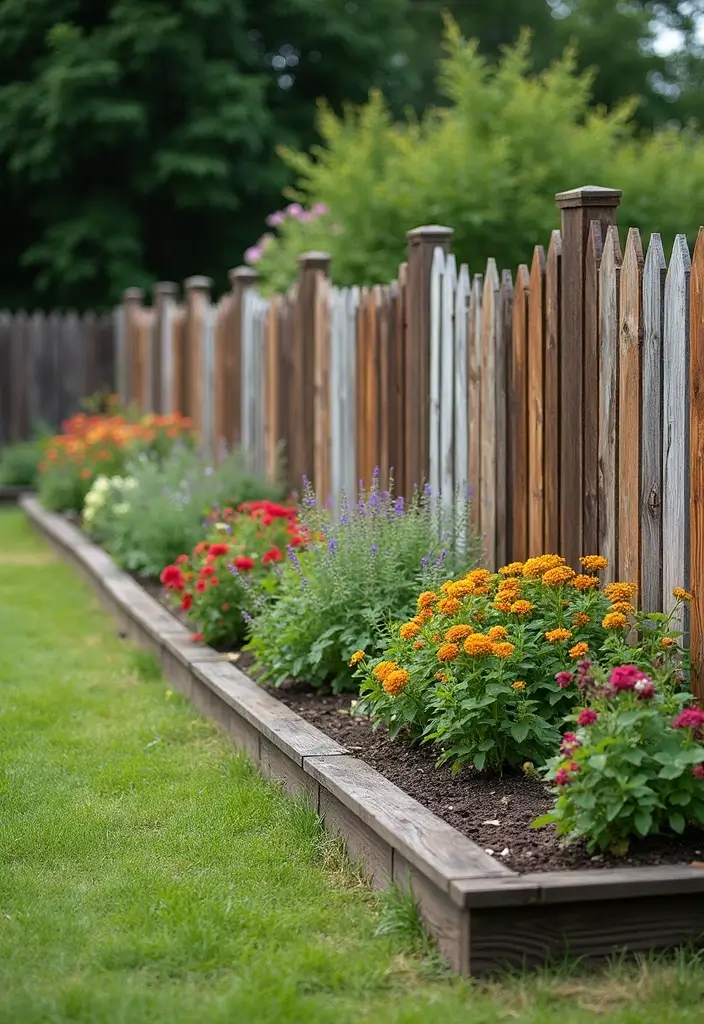
Repurposing old fencing panels as garden edging is both creative and eco-friendly. They provide a rustic yet sturdy boundary for your garden, and you can easily paint or stain them to match your outdoor decor.
To use fencing panels:
– Cut them down to size or use them whole for a more substantial look.
– Position the panels upright or lay them flat for different effects.
– This method offers plenty of opportunities for customization and creativity.
Using fencing panels as edging not only enhances your garden’s appearance but also promotes recycling.
21. Old Shovels and Tools Edging

For a truly unique garden border, consider using old shovels and garden tools. Not only do they recycle unused items, but they also add an interesting antique touch to your garden. This idea works particularly well in cottage-style or whimsical gardens.
To execute this edgy idea:
– Gather old tools and position them along the garden line.
– Secure them in place or leave them partially buried for a more natural look.
– Consider adding colorful flowers or plants around them for contrast.
This approach celebrates creativity and sustainability while enhancing the charm of your outdoor space.
22. Painted Logs Edging
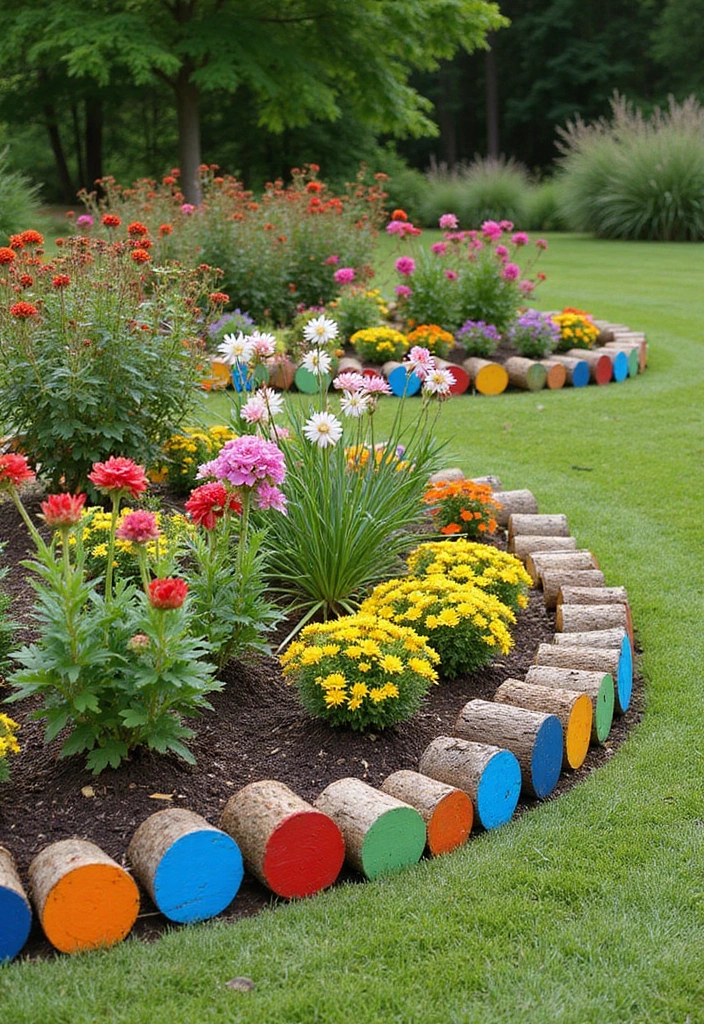
Painted logs are both an eye-catching and eco-friendly option for garden edging. You can use fallen branches or logs and give them new life by painting them in bright colors or fun patterns. This option is great for gardens with kids, adding a playful element.
To create your painted log edging:
– Collect logs and sand them down to remove rough edges.
– Use outdoor paint to create designs or simply paint them solid colors.
– Arrange the logs along your desired border.
This approach not only utilizes natural materials but also provides a canvas for artistic expression in your garden.
23. Recycled Plastic Edging

Using recycled plastic as garden edging is a sustainable choice that combines durability with practicality. This type of edging can withstand harsh weather without fading or breaking down, making it an excellent long-term solution.
To install recycled plastic edging:
– Choose pre-formed plastic edging for ease of installation.
– Lay it along the desired border and secure it with stakes.
– This option comes in various colors and styles, providing plenty of choices for personalizing your outdoor decor.
It’s a simple way to contribute to the environment while enhancing your garden’s appearance.
24. Cinder Block Edging
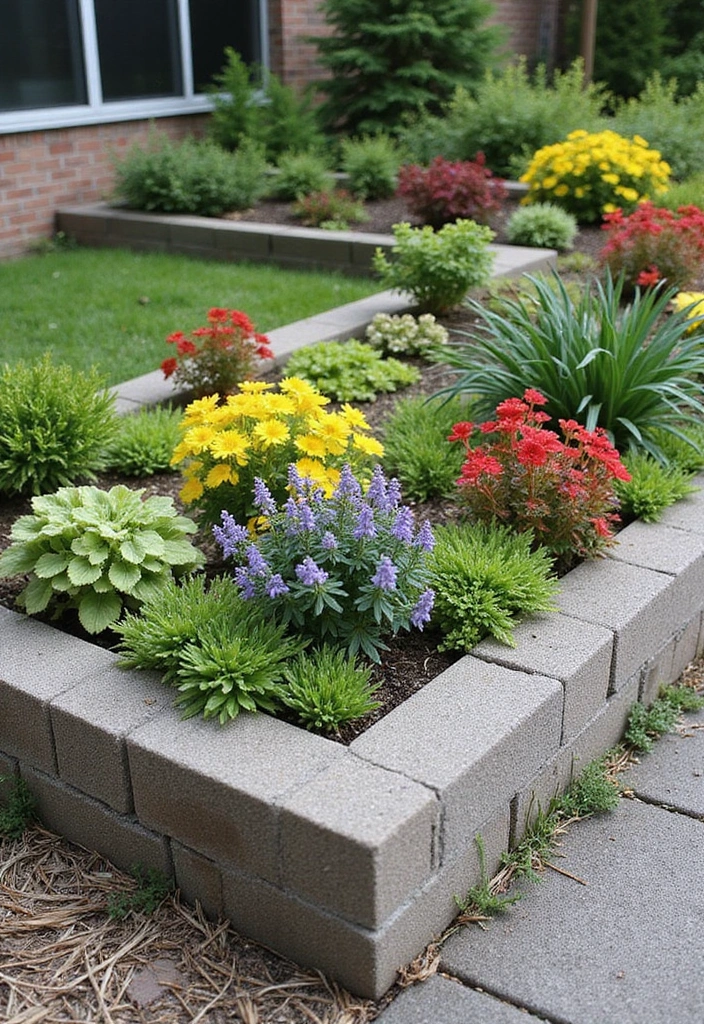
Cinder blocks offer a sturdy and industrial look for garden edging, and they can be painted or left in their natural state. This option provides a unique aesthetic that works well in contemporary gardens. Cinder blocks can be arranged in various patterns, creating a visually appealing border.
To create cinder block edging:
– Lay the blocks in a single row or stack them for added height.
– Fill the cavities with soil and plant succulents or flowers for added charm.
– Your garden will not only be defined but also have character through this striking edging method.
This approach allows for creativity and customization.
25. Natural Stone Edging
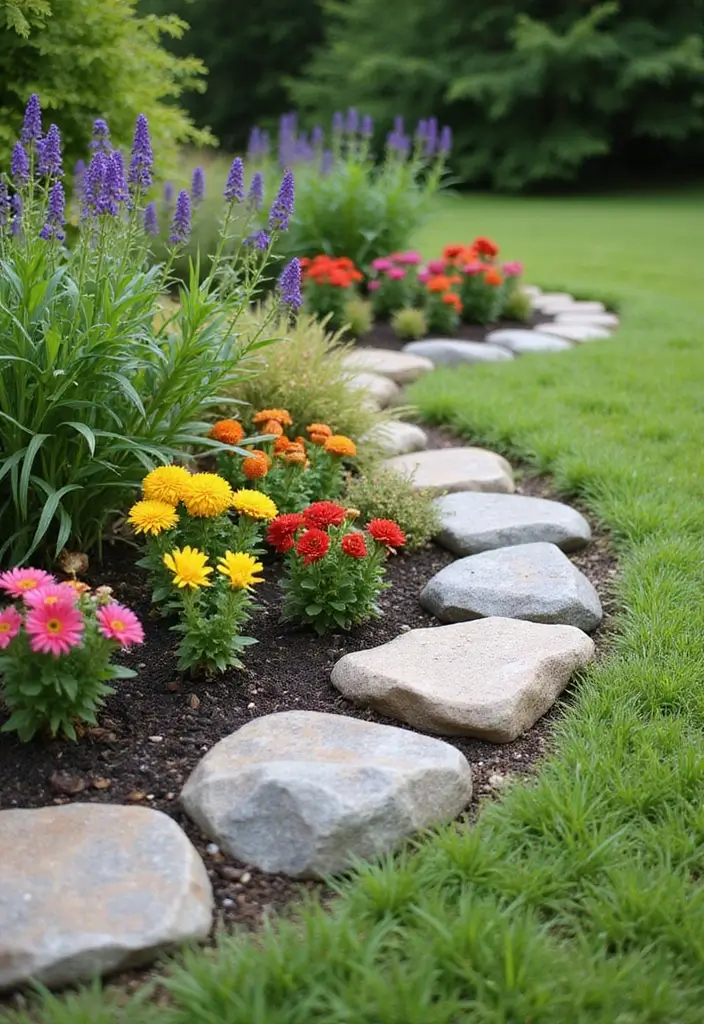
Natural stone edging combines durability with a raw, organic look. Stones can be arranged in varying sizes to create a textured border that harmonizes beautifully with surrounding plants. This edging style is particularly effective in rocky or woodland gardens, giving a sense of continuity with nature.
To implement natural stone edging:
– Choose a variety of stones in differing sizes for visual interest.
– Lay stones either flat or upright, depending on the look you desire.
– This method allows for creativity and adds dimension to your landscape design.
Natural stone edging not only enhances appearance but also helps to control soil erosion.
26. Driftwood Edging
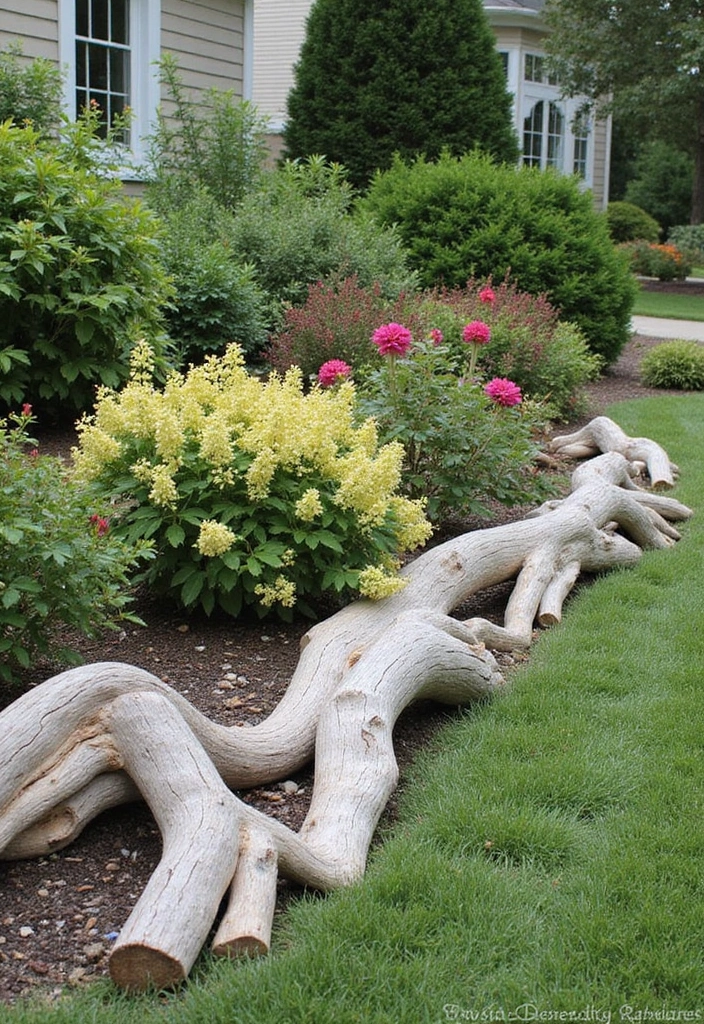
Driftwood creates a unique and coastal-inspired garden edging option, perfect for beachfront or nautical-themed gardens. The organic shapes and weathered textures of driftwood add character and charm.
To use driftwood:
– Collect pieces from the shoreline or local craft stores.
– Arrange the driftwood along the perimeter of your garden beds.
– This method works well for defining pathways and flower beds, enhancing the relaxed vibe of the space.
Driftwood also invites creativity, allowing you to layer and design as you see fit.
Embrace nature’s artistry! Driftwood edging not only defines your garden but adds a touch of coastal charm. Let your creativity flow and transform your outdoor space into a serene getaway.
27. Mulch and Rocks Edging

Combining mulch and decorative rocks creates a beautiful and functional garden border. This dual approach allows for weed suppression, moisture retention, and aesthetic appeal. Using contrasting colors of mulch and rocks can define spaces and enhance visual interest in your garden.
To achieve this look:
– Lay down landscape fabric to deter weeds.
– Add mulch first to retain moisture and then surround it with decorative rocks.
– This method not only looks great but also supports healthy plant growth.
It’s an effective way to marry beauty and practicality.
28. Perennial Edging
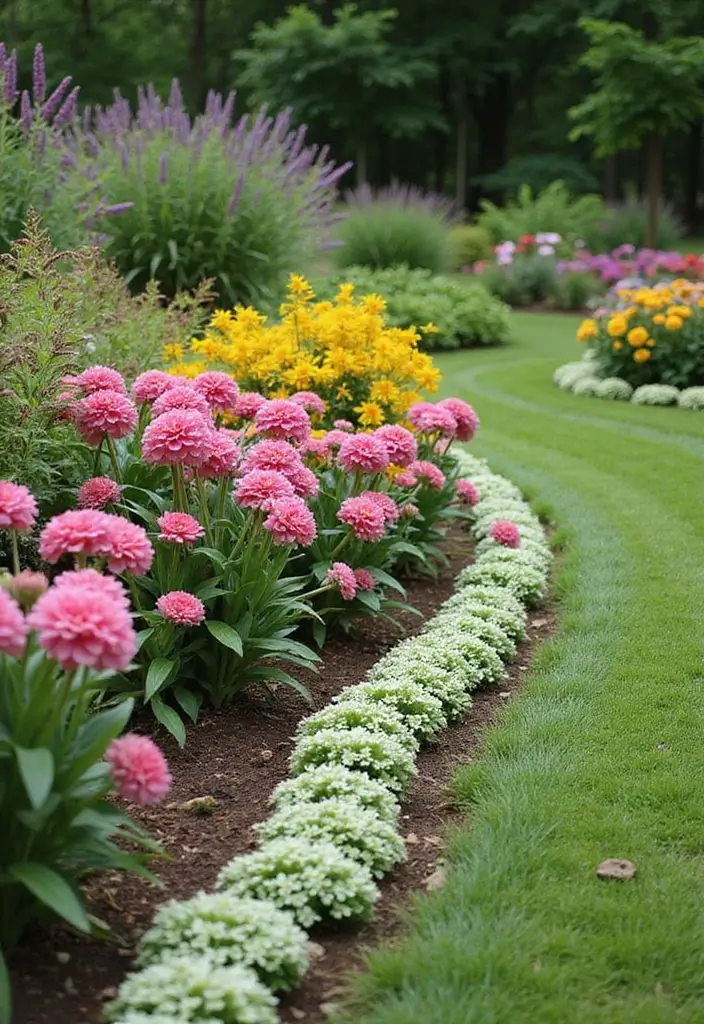
Utilizing perennial plants as garden edging is a striking way to incorporate color and texture while keeping your garden eco-friendly. Choose low-growing perennials that bloom over various seasons to ensure a dynamic border that changes throughout the year.
For perennial edging:
– Select plants that are suited to your climate and soil type.
– Space them appropriately to allow for growth and airflow.
– Regular trimming will keep them looking tidy.
This idea not only beautifies your garden but also contributes to biodiversity in your outdoor space.
29. Fabric Edging
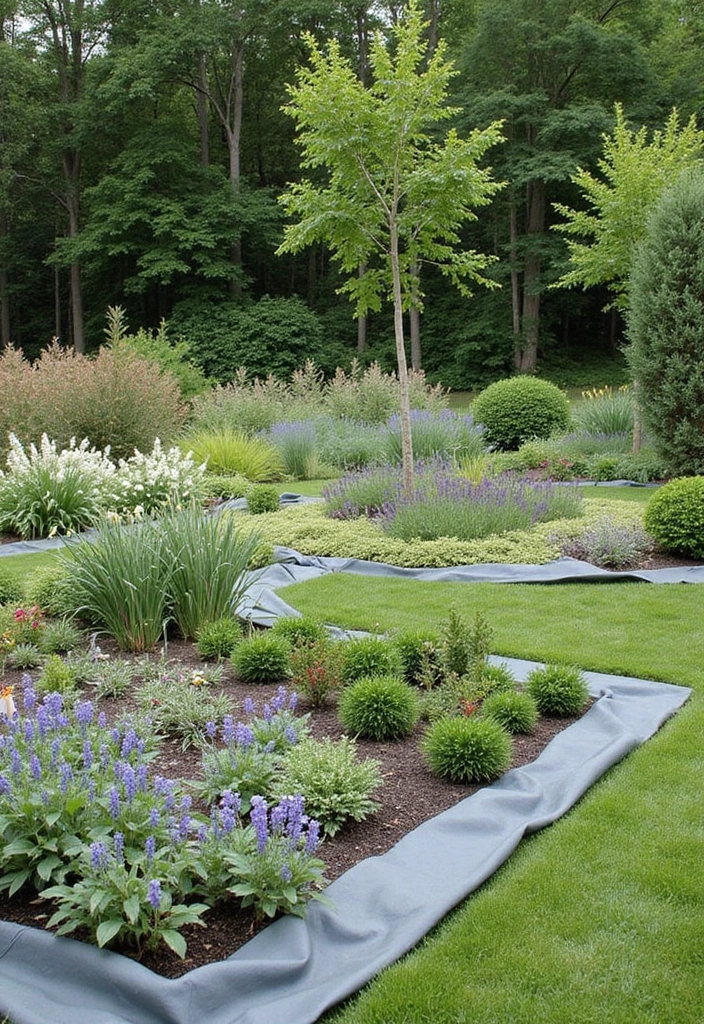
For a modern approach, fabric edging can add a contemporary touch to your garden. Landscape fabric is often used to suppress weeds but can also be creatively utilized to create unusual edging. This practical solution ensures clean lines and a tidy look.
To use fabric edging:
– Lay the fabric along the edge of your garden beds.
– Cover it with mulch, stones, or wooden chips for a finished look.
– This method can also be combined with other materials for added versatility.
It’s an easy-to-maintain option that enhances the visual appeal of your outdoor decor.
30. Seasonal Decor Edging

Incorporating seasonal decor as edging adds a unique and festive touch to your garden. Depending on the time of year, you can use pumpkins in the fall, holiday lights, or themed decorations that enhance the overall garden aesthetic.
To implement this idea:
– Choose decorations that complement your garden’s theme and style.
– Rotate decorations seasonally for an ever-changing look.
– This method creates a joyful atmosphere that invites visitors to explore your outdoor space.
Seasonal decor not only personalizes your garden but also brings joy and creativity into your landscape.
Transform your garden with seasonal decor! From festive pumpkins to twinkling lights, these garden edging ideas invite joy and creativity into your outdoor space all year round.
Conclusion
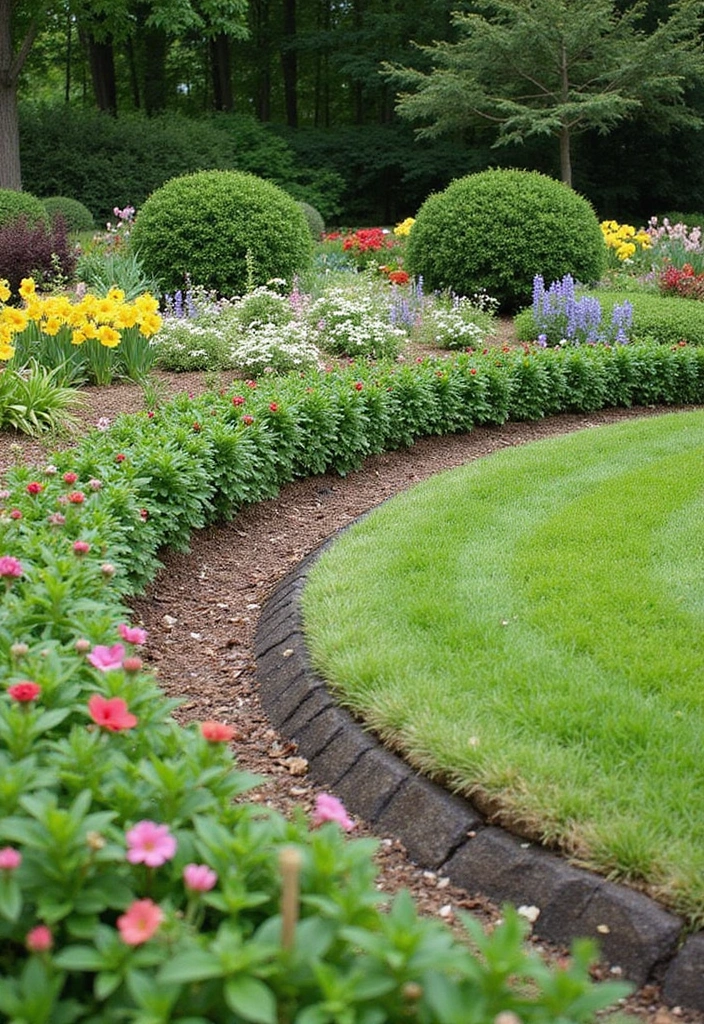
Creating a polished look in your garden is all about choosing the right edging ideas that reflect your style and commitment to sustainability. The options are endless, from reclaimed materials to living plants that breathe life into your outdoor space. As you plan your next garden project, consider how these eco-friendly ideas can enhance your landscape design while improving curb appeal.
Let your garden not only be a reflection of your personal taste but also a testament to the beauty of eco-conscious choices. Happy gardening!
Frequently Asked Questions
What Are the Benefits of Using Eco-Friendly Materials for Garden Edging?
Using eco-friendly materials for garden edging not only enhances the beauty of your outdoor space but also supports sustainability.
Materials like reclaimed wood and recycled plastic are great choices that minimize waste and reduce your carbon footprint. Plus, they can add unique character to your garden, making it both stylish and environmentally responsible!
How Can I Choose the Right Garden Edging for My Landscape Design?
Choosing the right garden edging depends on your landscape design and personal style. Start by considering the overall theme of your garden.
For a modern look, options like metal edging or concrete work beautifully, while natural materials like stone or driftwood are perfect for a rustic feel. Remember to think about functionality too—will it help with weed control or define paths? Make it work for you!
What DIY Garden Projects Can I Incorporate with Garden Edging Ideas?
There are so many fun DIY garden projects you can explore with garden edging! For example, you can create a charming raised garden bed using reclaimed wood or make a decorative border with glass bottles.
Get creative by using items like old tools or painted logs to craft unique edging that reflects your personality. The possibilities are endless, and it can be a rewarding way to personalize your outdoor space!
How Does Garden Edging Affect Curb Appeal?
The right garden edging can significantly enhance your home’s curb appeal. Neatly defined borders not only organize your garden but also draw the eye and create a polished look.
Using attractive materials like brick or natural stone can set your garden apart, making it look well-maintained and inviting. This can be especially important if you plan to sell your home, as first impressions matter!
Can I Mix Different Types of Edging Materials in My Garden?
Absolutely! Mixing different types of edging materials can add visual interest and depth to your garden.
For instance, combining stone borders with bamboo edging or integrating recycled tire edging with living plants can create a vibrant, eclectic look. Just ensure that the styles complement each other and fit the overall theme of your landscape design for the best effect!





